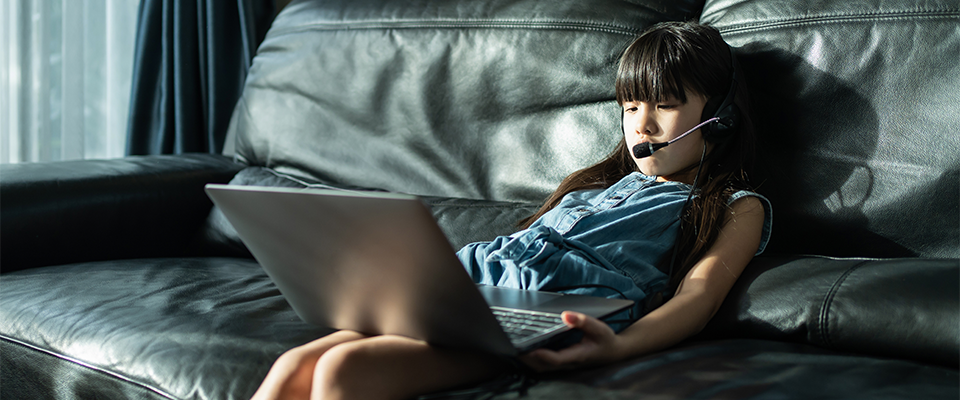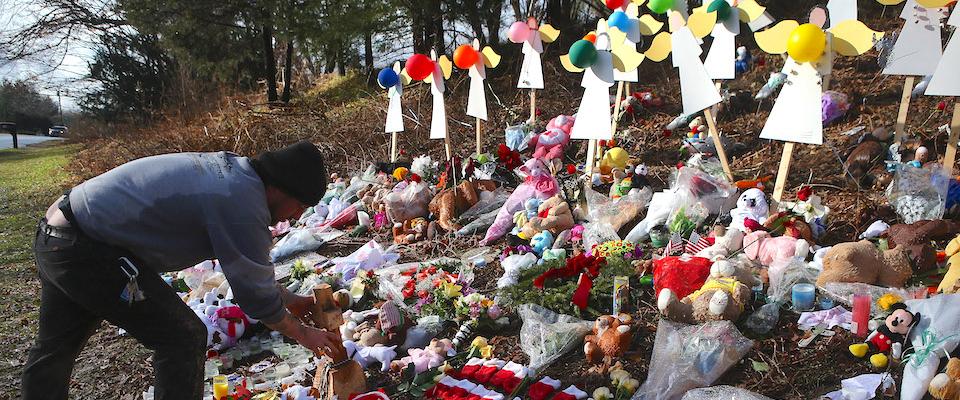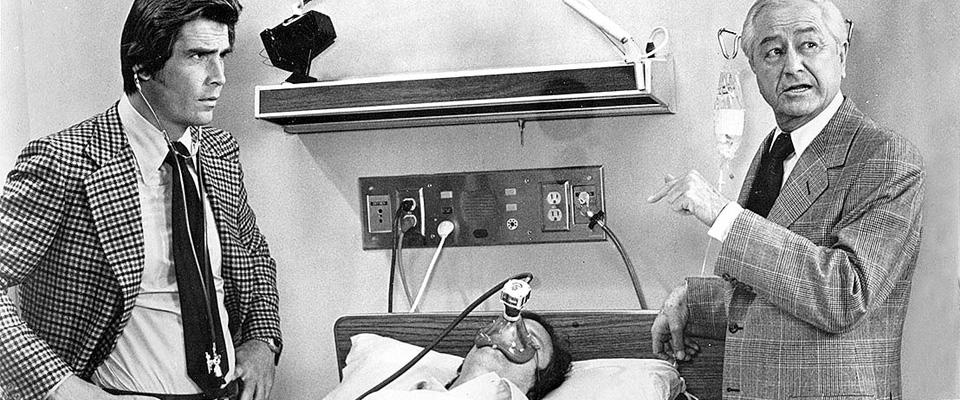The past year has been very difficult for the kids. Prolonged school closures, which have lasted over a year for most middle and high schoolers in California, have deprived students of normal social and academic interactions—during one of the most important stages in their social-emotional learning. Adolescent brains are particularly geared toward seeking status and respect among their peers. So, what happens when the primary settings for navigating and exploring interpersonal relationships aren’t available to them?
Ronald Dahl is an expert on this question. Dahl is a Professor of Community Health and Human Development in the UC Berkeley School of Public Health and the Founding Director of the Center for the Developing Adolescent, a non-profit research organization. He’s also a pediatrician who has published extensively on child and adolescent behavioral and emotional health and brain development. California spoke with him about the effects of the pandemic and school closures on the younger generations.
This conversation has been edited for length and clarity.
According to a recent Scientific American article, adolescence is a particularly important time to focus on social-emotional learning. Could you break down the reasons for this?
Rather than talk about adolescence, it’s probably better to talk about slices in adolescence. Adolescence isn’t just teenage years. Ten to 13 year olds are an important part of this, but obviously they’re different than 21 to 24 year olds or 17 to 19 year olds. What are the opportunities and vulnerabilities for early adolescence, for mid-adolescence, and for the transition to adulthood?
“Kids are learning how to be in the world by trial and error. It’s the equivalent of a toddler learning to walk, but socially.”
A key part of why we think social-emotional learning is so important in early adolescence is that it’s learning about the self in relation to valued others. What do they think of me? Do I like them? Do they accept me? Do I belong? All the insecurity about whether you’re being rejected—those confusing feelings we all remember having—are intensified during that period of time. And if you talk to people who teach middle school, they say it’s crazy, noisy, messy, because the emotions are all over the place.
One of the reasons it’s so noisy is there’s intense learning going on. Kids are learning how to be in the world by trial and error. It’s the equivalent of a toddler learning to walk, but socially. You’re trying to figure out how to be in a more complex social environment: Where am I? Where do I fit in? Who am I in relation to others? And it changes. It’s not like you hit your stride at 11, and that’s what you’re going to be for the rest of your life. You’re trying out different identities.
A lot of our words when we’re describing this imply that this is happening at the level of your cognition—your thinking, the sentences and words—when actually, so much of it is happening in terms of feelings and emotions. This is a time when young people are experiencing strong negative and positive feelings, figuring out where it feels comfortable to be, where it feels exciting to be, where it feels very uncomfortable to be. It’s this connection between goals, feelings, and identity that is being shaped in so many ways.
The large majority of adolescents in California have had their daily lives upended in the pandemic. They haven’t been able to go to school, and we’ve seen this big uptick in mental health crises among adolescents over the past year.
“Kids who are adaptive and resilient will show few long-term negative effects. Others are going to have lost something significant, and it’s going to be hard to catch up.”
Have we? It’s an interesting thing to dig into. So that’s part of the narrative that’s out there, but the data are really noisy. I think there’s a lot of uncertainty about how much mental health problems have been amplified. There’s huge concern that they may be, but we don’t know yet the magnitude of the mental health problems, and I don’t think we should just assume they have been massively increased. I do think that it has interfered with social learning in ways that we need to understand over time. It gets back to the fact that what young people want to be doing is figuring out who they are in relation to valued others. And they didn’t have a lot of ways to do that during the pandemic. They were incredibly adaptive at using technology and communicating with each other digitally, but it’s not the same. They were being deprived of the most exciting, thrilling, and stressful set of experiences that they want to be having, which is figuring out how to interact with each other and to deal with these charged emotions of attraction and uncertainty about being accepted and putting each other down in either playful ways or mean, bullying ways. They had less opportunity to experience that in real-world interactions. It was drastically diminished at a time that their appetite for it was probably at its peak.
You’re saying it’s unclear whether this is going to have net positive or net negative effects.
Yes, and it’s probably going to be mixed. Some kids who are adaptive and resilient will show few long-term negative effects—those who were actually protected by not having to struggle through difficult social situations at a key time. Others are going to have lost something significant, and it’s going to be hard to catch up. I think we shouldn’t too quickly add to the narrative that it’s been so harmful, as opposed to asking, how has it been harmful? And for whom has this been most difficult? Like, which subgroup of young people may be most concerning, and what can we start doing to help them emerge from this as healthily as possible?
I was referring to recent reporting about an uptick in teens coming into hospitals in crisis. It’s hard to know whether those adolescents were already experiencing mental health issues or whether these are new. But as a mother, I’ve noticed a lot of disengagement from my own kid and his peers during remote learning.
“The best way to think about the effects of being immersed in the digital world is that it’s going to amplify vulnerabilities and opportun-
ities.”
There were an enormous number of challenges for almost everyone I know. When you see the struggle and you see uncertainty and you see a loss of something that kids wanted, an inability to play with their friends in person, it raises concerns. So, what are the challenges that result in growth and adaptation, and what are the challenges that result in harm?
Another thing is that, as families are stressed and challenged, they’re also getting lots of signals about these issues as well. And so some kids, especially the younger kids, liked being around the families more, if they were in a good family environment that could have been positive. But kids that are really ready to push away from their families, who are individuating and figuring out who they are, were suddenly stuck with their families all the time. And obviously lots of kids already have fragmented family systems or challenges. I think we are going to be digesting the short-term, medium-term, and long-term results for a long time.
From a neuroscience perspective, are there any particular effects of prolonged school closures that you’re most concerned about?
I will bring a lens, not only in terms of the neuroscience of early adolescence, but also as a clinician who treats a lot of kids with anxiety and depression. One concern that a number of us have been sharing with each other is that, in the short run, some of the kids were buffered from some of the social anxiety. Avoidance is a problem with anxiety—kids [with anxiety] start avoiding novel, uncertain situations. Of course [with remote learning] they didn’t have those situations to avoid, but that also means they weren’t practicing. Even if some of those young people were doing okay during the pandemic itself, they’re going back to school and it’s going to be a huge jump. I’ve talked to teachers and school officials—they’re trying to think about, how do you support the transition, especially for the kids who may be the most anxious?
Another question is, what are the things that [students] could have learned that are going to create deficits? I think the best way to think about the effects of being immersed in the digital world is that it’s going to amplify vulnerabilities and opportunities. Young people who have a lot of support from their families and ways to interact with their friends, ways to get involved with hobbies, may be doing quite well. But if you flip that around, the kids with the least amount of [interaction] have missed two years, and not just of their schoolwork. There’s a backslide in terms of reading and math and other skills, but there’s a similar set of issues in terms of social, emotional, and identity development. If you haven’t been having those experiences, if you worry and ruminate, you find other ways to feel like you matter that may not be adaptive.
I’m so used to the warning that we need to limit our children’s screen time. Is the drastic increase in screen time—which seems to be almost 180 degrees from what pediatricians would generally advise—going to have lasting brain effects?
“It’s not about screen time, but what are you doing on the screen? If you’re creating, contributing, connecting, those are healthy
things.”
We’ve learned a lot in the last few years about this, and there’s a few good, big-picture messages. The first is that a lot of the fears were hyped or overstated. The data suggests that there are vulnerable kids for whom too much technology or the wrong kinds of technology can really amplify problems. That’s clearly true. But in general the evidence about the screen time is that some of the short-term associations were about kids with certain kinds of problems who would be more likely to be spending more time on the screen. This was also true of television and even reading. People thought it was going to destroy memories because kids were sitting by themselves all the time, looking at words and letters instead of being out, playing with their friends.
I think increasingly it’s not about screen time, but what are you doing on the screen? If you are creating, you’re contributing, you’re connecting, those are healthy things to be doing. If you’re interacting with other people, if you’re developing skills, if you’re doing it in a social context, that can often be really helpful learning. If it’s a way to avoid experiences, by just sitting and doing something repetitive or watching short videos that grab your attention, there’s lots of unhealthy patterns. Most of us quickly realized that we all had to be spending more time in a new way of communicating. Kids in general are more adaptive than adults. They don’t even think of it as being on technology, they just say they’re interacting with their friends. It’s not a category for them; it happens to be one of the ways they connect with their friends.
What about the possible positive effects of kids not being in school with their peers, where they face challenges like social status and the pressure to fit in?
What I would emphasize here is the importance of a learning curve. Going back to toddlers learning to walk, it’s not like they’re not going to learn to walk if they didn’t get practice for a month. On the other hand, how do they get back to practicing and experimenting and mastering new challenges? Rather than just “how are they doing” or “how are they behaving,” [we should be asking], “how are they learning in healthy ways about who they are, how to operate in the world, how to connect with people, how to contribute and be kind?” School is often the way that so many young people have those experiences, including sports, hobbies, what’s happening on the bus and the playground. So we think about the school setting as scaffolding, a hopefully safe place for them to be doing that. And if there are ways to do that outside of school, then I think those are less of a concern.
Having positive challenges and growth experiences is really important. Rather than just equate that to being in school or out of school, I think the question is—especially for disadvantaged kids who have fewer family and community and neighborhood resources to buffer—how do we help them find ways to contribute in valuable ways?





















